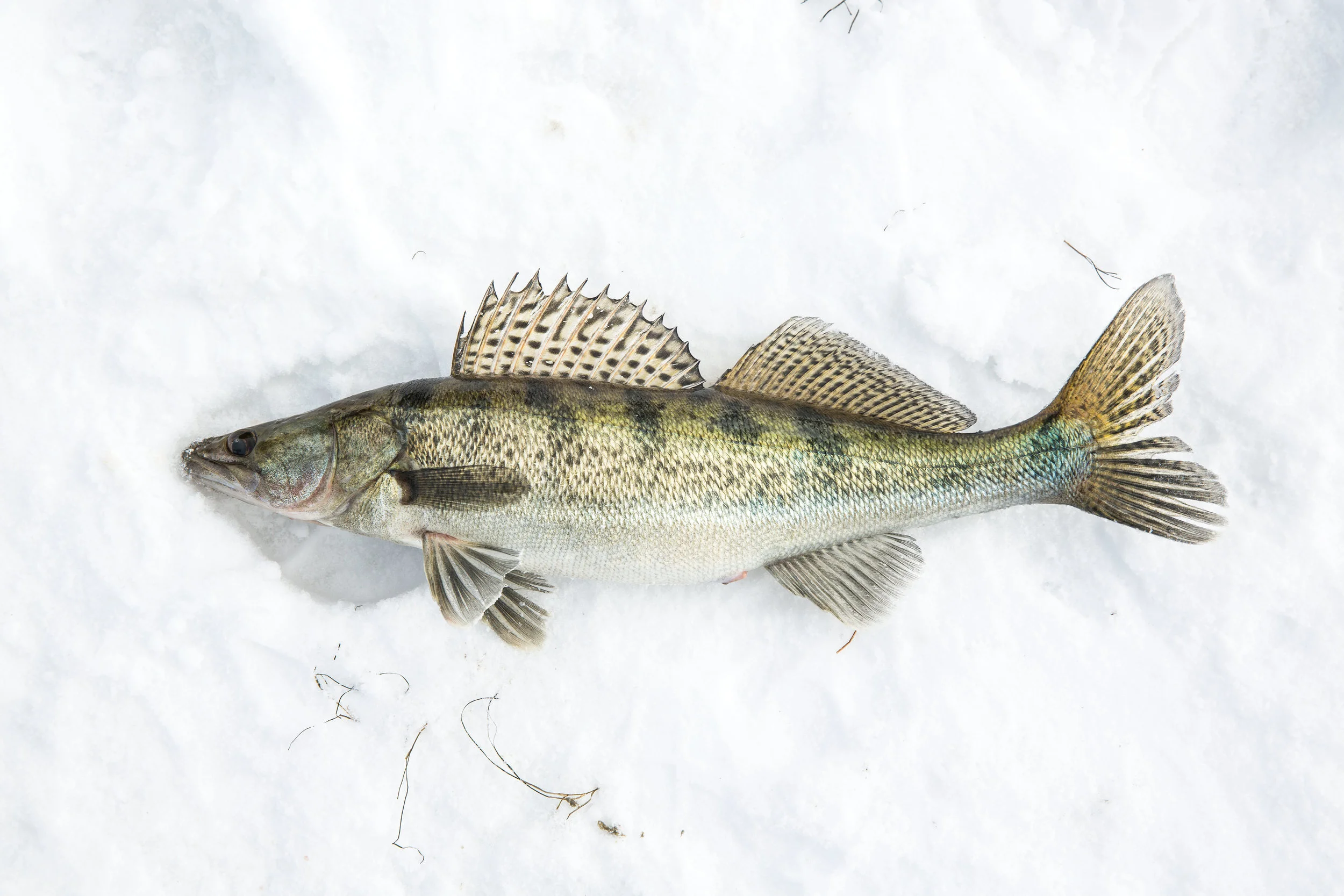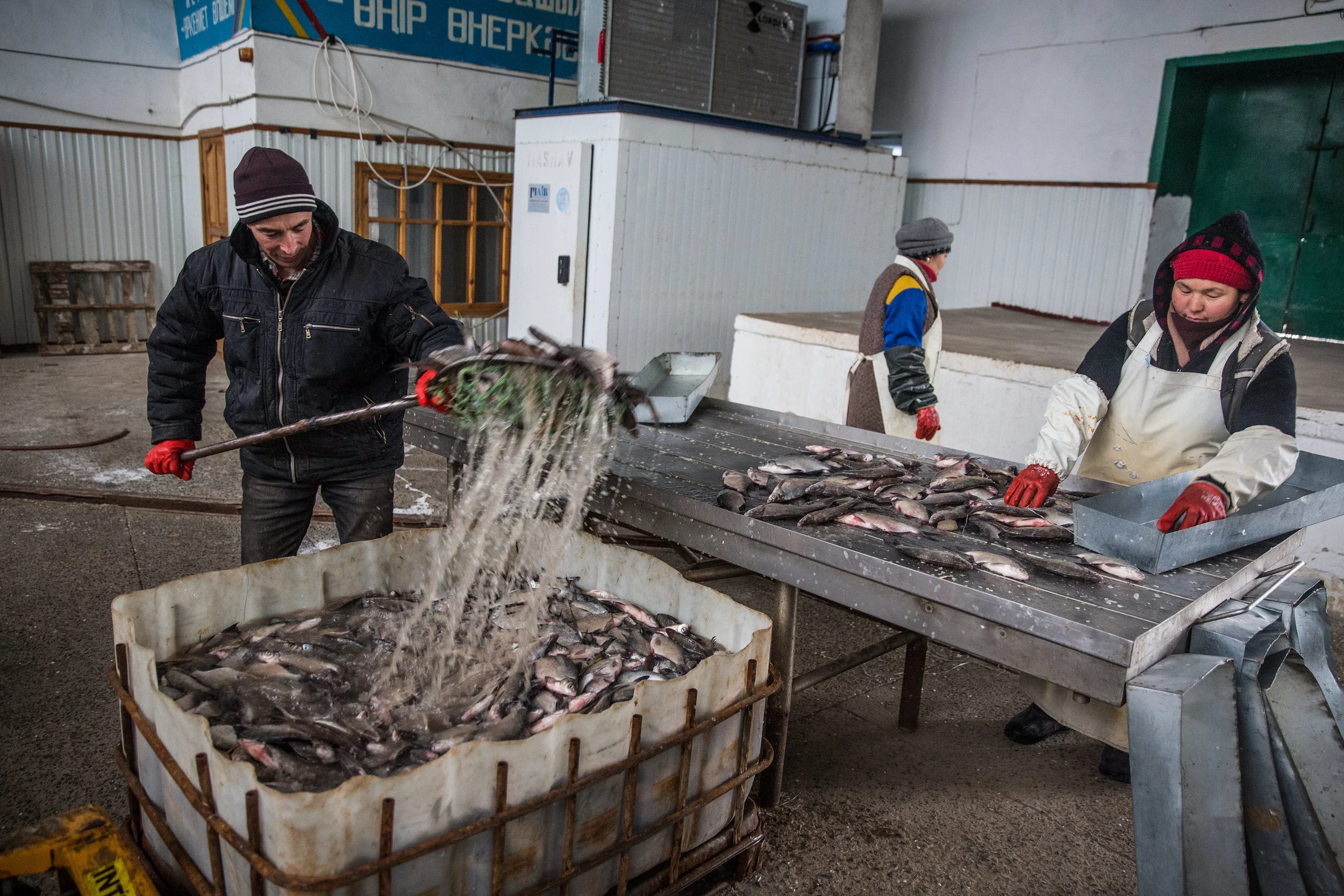Once Written Off for Dead, the Aral Sea Is Now Full of Life
Thanks to large-scale restoration efforts, the North Aral Sea has seen a resurgence of fish – a boon to the communities that rely on it.
Omirserik Ibragimov, 25, uses a net to ice fish on the frozen surface of the North Aral Sea near Tastubek, Kazakhstan. (Credit: Taylor Weidman)
By Dene-Hern Chen
with reporting contributions from Serik Dyussenbayev
March 16, 2018
ARALSK DISTRICT, Kazakhstan – Omirserik Ibragimov fixed his gaze on the hole he had carved out from the frozen Aral Sea. The 25-year-old’s hands moved steadily, pulling out a fishing net that he and his father had left under the solid, snow-covered surface just three days earlier.
After a minute marked by tense silence, two breams emerged from the hole. Then three pike-perches, their silver scales shimmering as they struggled against the net’s green meshing.
“Here comes the gold,” Omirserik said with a smile as he continued tugging the net. The pike-perch, with its tender flesh and few bones, is considered to be the most valuable catch, selling for roughly 650 tenge (a little over $2) for a kilogram; local fishermen refer to them as “gold fish.”
His father, Kidirbai, worked with his bare hands to free the fish, his knuckles flush from the freezing water. After gathering all their nets, their total catch of the day was about 77 pounds (35 kilograms) of pike-perch and 44 pounds (20 kilograms) of bream—a sizable haul for a few hours of work.
Pike-perch (Credit: Taylor Weidman)
Just 15 years earlier, this would not have been possible. Once the world’s fourth-largest freshwater lake, with an area of some 26,000 square miles, the Aral Sea became the victim of the Soviet Union’s agricultural policies in the 1950s. Water from its two river sources—the Amu Darya and Syr Darya—was intentionally diverted for cotton cultivation.
As decreasing water flow into the sea caused a rise in salinity, the abundant freshwater fish species began to die out. By the 1980s, the fishing industry in the Aralsk district—once a robust source of employment for the region—was wiped out, forcing a mass migration of people. The remaining population was hit by extreme weather, brought on by the dried-out Aral seabed, and deteriorating health.
Workers process fish at a plant in Aralsk, Kazakhstan. (Credit: Taylor Weidman)
“The people destroyed the sea and then nature took revenge on the people,” said Madi Zhasekenov, the director of the Aralsk Regional Museum and Fishermen Museum.


